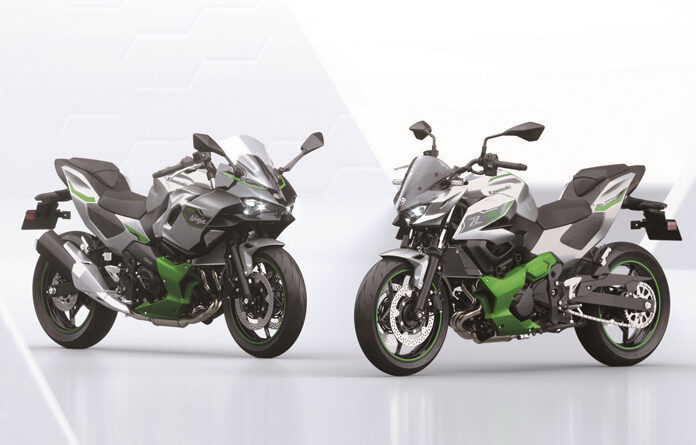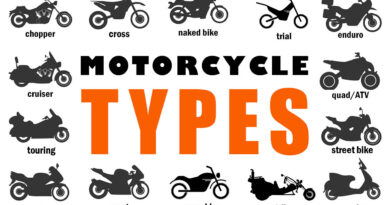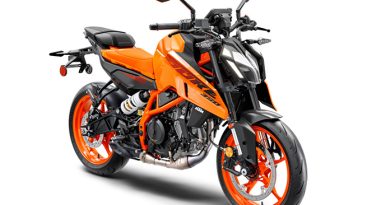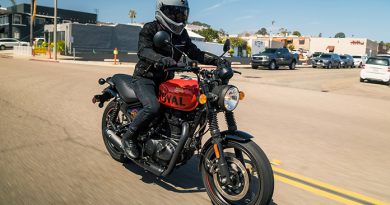2024 Kawasaki Ninja 7 Hybrid ABS and Z7 Hybrid ABS Review | First Look
No one can stop the wheel of time from turning, and that wheel is turning away from internal combustion engines (ICE) and toward alternative power sources. As the world investigates cleaner fuel options, motorcycle brands are following suit. Kawasaki released the Ninja e-1 and Z e-1 fully electric bikes last year, and adding to the range of power options are the new Kawasaki Ninja 7 Hybrid ABS and Z7 Hybrid ABS models, both of which employ an ICE and an electric motor to produce power.
Related: Kawasaki Announces Ninja e-1 ABS and Z e-1 ABS Electric Motorcycles, Other Updated Models
Kawasaki says these bikes as the first “strong” hybrid motorcycles, meaning they can run on ICE power, electric power, or both depending on the ride mode selected. Being able to select which power source is used at any given time allows riders to choose if they want a full-power experience or a fuel-efficient and zero-emission ride. Providing both in one motorcycle takes some ingenuity, and while the styling of these bikes will remind one of recognizable Ninja and Z-series motorcycles, the inner workings are different than what you’re used to.
This First Look Review covers both the Ninja 7 and the Z7 Hybrid bikes, as these two motorcycles are essentially the same with some cosmetic differences. Like other Kawasaki models in the Ninja and Z-series families, the Ninja variant has full bodywork while the Z7 has less. One other difference is that the Z7 has a higher handlebar for a more upright riding position, although the handlebar on the Ninja 7 Hybrid is also raised higher than on other Ninjas. The rest of the details below will be the same for both hybrid motorcycles.
Engine & Motor | Kawasaki Ninja 7 Hybrid ABS and Z7 Hybrid ABS
The ICE unit in these bikes is the liquid-cooled 451cc parallel-Twin taken from the Kawasaki Eliminator. The engine prioritizes high-rpm performance, and the Integrated Starter Generator is a first for Kawasaki and combines starter and generator functions. The electric power source is a liquid-cooled traction motor paired with a 48V lithium-ion battery pack and rated at 7.0 kW (9.0 kW max). Unlike fully electric vehicles, the battery on these bikes charges while riding, so there’s no need to plug in to a power source before your ride.
Related: 2024 Kawasaki Eliminator Review | Video
The battery pack is located beneath the seat. The Integrated Starter Generator is on the left side of the ICE, and the ECU is in the tail section. All of this is placed within a lightweight trellis frame.
Chassis | Kawasaki Ninja 7 Hybrid ABS and Z7 Hybrid ABS
Suspension on both bikes is provided by a nonadjustable 41mm telescopic fork and a new Uni-Trak suspension with linkage positioned below the swingarm in the rear. The rear suspension also offers adjustable ride height (seat height is 31.3 inches). Both bikes use dual 300mm front disc brakes with 2-piston calipers and a single 220mm rear disc with a 1-piston caliper, and both come with ABS. Kawasaki claims that the ergonomics of these bikes optimize low- and medium-speed maneuvers. The fuel tank holds 3.7 gallons of fuel, and curb weight for the Ninja 7 is claimed at 502.7 lb (weight for the Z7 is not available).
Ride Modes | Kawasaki Ninja 7 Hybrid ABS and Z7 Hybrid ABS
The versatility of these two hybrid bikes is accessed through the three ride modes: Sport-Hybrid, Eco-Hybrid, and EV modes. As the name suggests, Sport-Hybrid mode is designed for sporty riding, and gives the rider access to the bike’s full power potential. In Eco-Hybrid mode, the electric motor kicks in during startup and transitions from electric to hybrid power once the engine gets up to around 2,000 rpm, optimizing fuel efficiency. For all-electric power, EV mode is designed for low-speed and short-distance rides and can only be engaged when the bike is in 4th gear or lower and with a speed of less than 15 mph.
Unlike most ICE-powered motorcycles, the Ninja 7 Hybrid and Z7 Hybrid feature an electronically controlled 6-speed transmission – no clutch lever or left-foot shift lever is included. In Sport-Hybrid and Eco-Hybrid ride modes, riders have the option to operate the transmission manually with shift buttons on the left switchgear. The hydraulic clutch is controlled by the ECU to operate automatically.
Rider Aids and Other Technologies | Kawasaki Ninja 7 Hybrid ABS and Z7 Hybrid ABS
Since the ride modes put power to the ground in different ways, they each have distinct functions and rider aids available that contribute to the riding experience. In Sport-Hybrid mode, the e-boost function elevates the overall output for a brief 5-second period, providing a burst of power that Kawasaki claims matches that of a 650cc-class motorcycle. This function can be activated while riding or when stopped for a more thrilling acceleration off a standing start.
These two bikes are also equipped with an Automatic Launch Position Finder. This feature automatically drops the transmission down to 1st gear when the bike comes to a stop, and the system can be deactivated for riders who prefer more manual control.
Adding to this growing list of technologies is Walk Mode with a reverse function. This mode allows for easy maneuvering in a parking lot or garage and propels the bike at a speed of 2 mph. Closing the throttle beyond the “zero” position kicks the bike into reverse, again no faster than 2 mph.
The Kawasaki Ninja 7 Hybrid and Z7 Hybrid come with a 4.3-inch TFT full-color display with Bluetooth connectivity to a smartphone via Rideology the App. The screen’s background transitions from white to black depending on ambient lighting, or it can be set to white or black for personal preference. The brightness also adjusts automatically.
Through smartphone connectivity, riders can access a list of data and options through Kawasaki’s app, including vehicle information, a GPS-informed riding log, call or mail notifications on the display, a maintenance log, and the ability to share riding logs and location with other Rideology the App users.
Styling and Pricing | Kawasaki Ninja 7 Hybrid ABS and Z7 Hybrid ABS
The styling of these bikes merges recognizable Ninja and Z-series styling with a futuristic hybrid aesthetic. They both come equipped with a windshield to help deflect wind from the rider and passenger. All lighting is LED.
Both bikes come in a silver with lime-green color scheme. Pricing has not yet been announced.
Find more information at the Kawasaki website.
Check out more new bikes in Rider’s 2024 Motorcycle Buyers Guide
The post 2024 Kawasaki Ninja 7 Hybrid ABS and Z7 Hybrid ABS Review | First Look appeared first on Rider Magazine.




